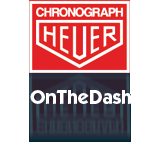

The Calm Before the TAG Heuer Storm, comfort in Two Carrera Classics
TAG Heuer knew that it was going to kick up a storm at this year’s Baselworld watch fair, held in March. On the first day of Baselworld, TAG Heuer introduced the Carrera Heuer 01, a mix of materials and styles that was radically different from any watch previously made by TAG Heuer.
Days later came the announcement that TAG Heuer would team with Google and Intel to produce a “connected” watch. Many has expected TAG Heuer to develop a connected watch, but the partnership with these giants attracted worldwide attention.
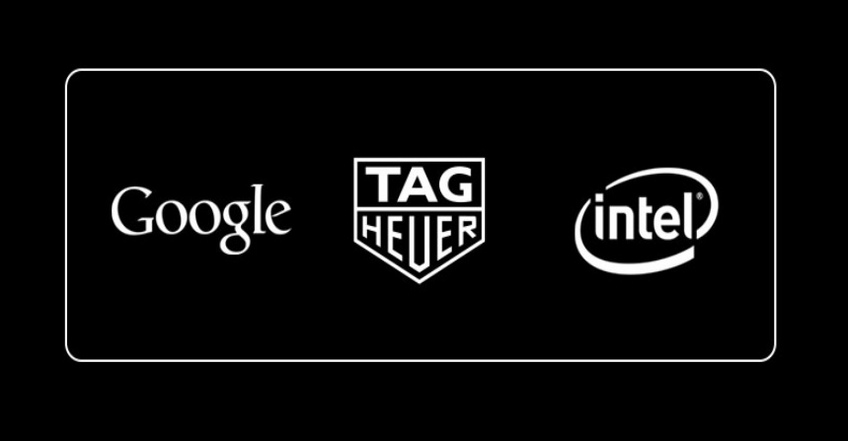
And while TAG Heuer was in the mood for shock and awe, our friends from La Chaux-de-Fonds decided they might as well hit us with a new logo, which would be different from what we have grown accustomed to since TAG affiliated with Heuer over 30 years ago.
Perhaps realizing that it would be turning the TAG Heuer world upside down at Basel, two months before the fair, TAG Heuer introduced two models of the Carrera that would provide us with comfort that it would not abandon the unique heritage that it had developed over the previous 50 years. Before TAG Heuer lit the Basel sky with dazzling fireworks, it provided the warmth of a familiar campfire with two new Carreras – the Calibre 6 Chronometer and the Calibre 18 Telemeter Chronograph. Both have the familiar Heuer logo; both have the familiar Carrera look.
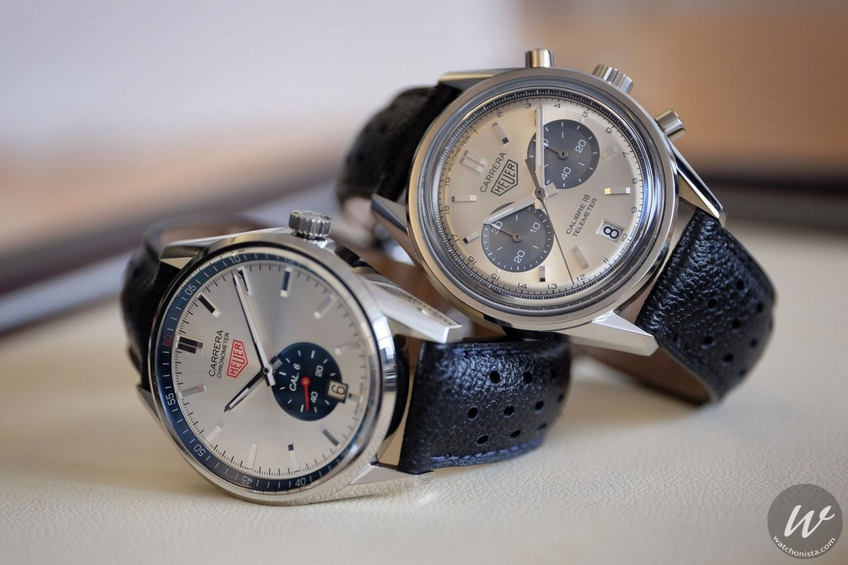
Heuer’s 1960s Carreras
The story of the first Carreras is familiar to most chronograph enthusiasts. In the early 1960s, Jack Heuer decided that Ed. Heuer & Co. should transform the racer’s chronograph from models that were laden with ornamentation and complex scales, to a modern design in which every element would be as pure as possible. Enthusiasts describe the sports car as a car every element of which is makes it go fast, and no element of which slows it down. The first Carreras lived up to this same standard, as every part of the watch made it legible, rugged and easy for the driver or navigator to operate. Clean dial; bright markers; simple hands; large crown and pushers; and even the inner tension ring served the dual purposes of holding the crystal in place and marking the one-fifth seconds.
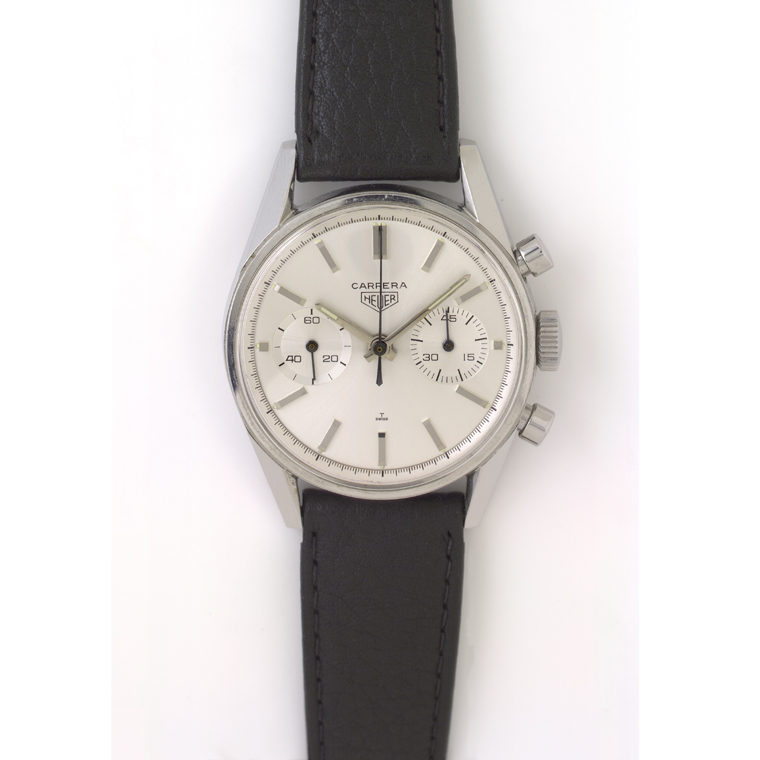
For several years, the Carreras maintained the purity of having the chronograph registers match the dial itself – the Carrera was produced with a white dial (and white registers) and with a black dial (with black registers). Toward the end of the 1960s, however, Heuer offered new versions of the Carrera – the white dial Carrera was offered with black sub-registers and the black dial Carrera was offered with white sub-registers.
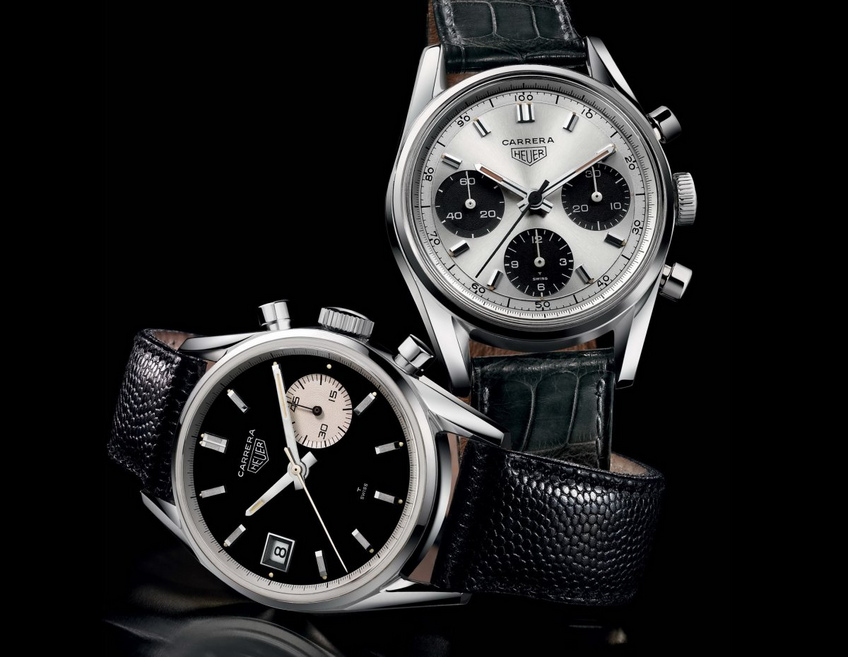
Five decades later, these 1960s Carreras with “contrasting subs” have become most cherished of the vintage Carreras, selling at a significant premium to the earlier models.
Carrera Calibre 18 Telemeter Chronograph
Since it first revived the Carrera name in 1996, TAG Heuer has produced hundreds of different models of the Carrera. Some of these TAG Heuer Carreras have been very literal re-issues of the first Carreras, while other models have shared little more than the Carrera name with the classic 1960s Carreras. With the introduction of the new Carrera Calibre 18 Telemeter chronograph, we can say that no other model has been more effective in capturing the essence of the 1960s Carrera.
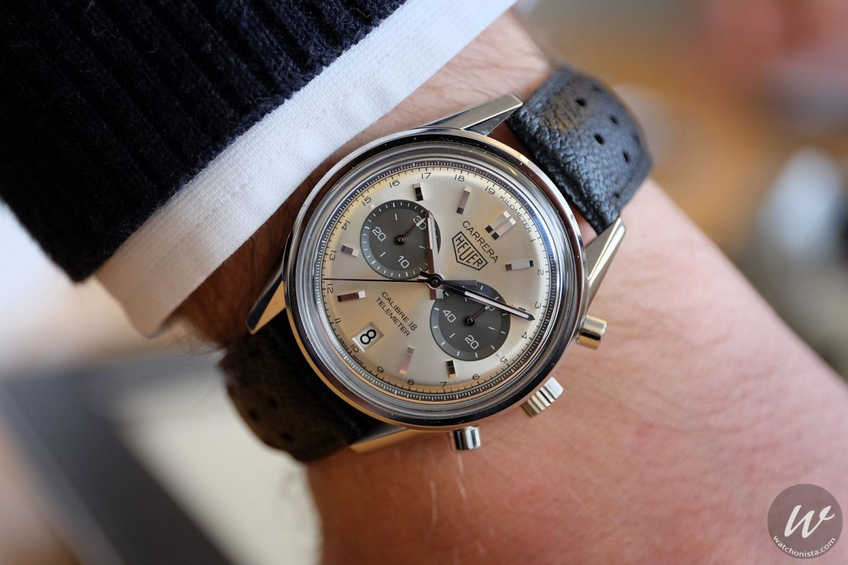
In the 1960s, Jack Heuer removed excess ornamentation to create the ideal sports chronograph, and – 50 years later -- this Carrera Calibre 18 Telemeter reminds us that it is worthwhile to do a good clean-up every once in a while. Since 1963, the Carrera name has appeared on chronographs of every shape, size, configuration and material. With the new Calibre 18 Telemeter chronograph, we return to the essence of the Carrera. The shape of the case, its 39 millimeter size, and even the geometry of the crystal all reflect the original 1960s Carrera. So too, the bright steel markers and hands, the simple pushers and generous-sized crown.
With the addition of the telemeter scale, an element not seen on a TAG Heuer chronograph since the 1940s, TAG Heuer shows us that there are still interesting elements that can be effectively added to the Carrera. The telemeter scale allows the user to determine the approximate distance from an event that can be both seen and heard. Knowing that sound travels as a speed of approximately 340 meters per second (at sea level), by timing the interval between seeing a flash (whether artillery fire or lightning) and hearing the sound, we can determine the distance of the enemy troops or the thunder storm.
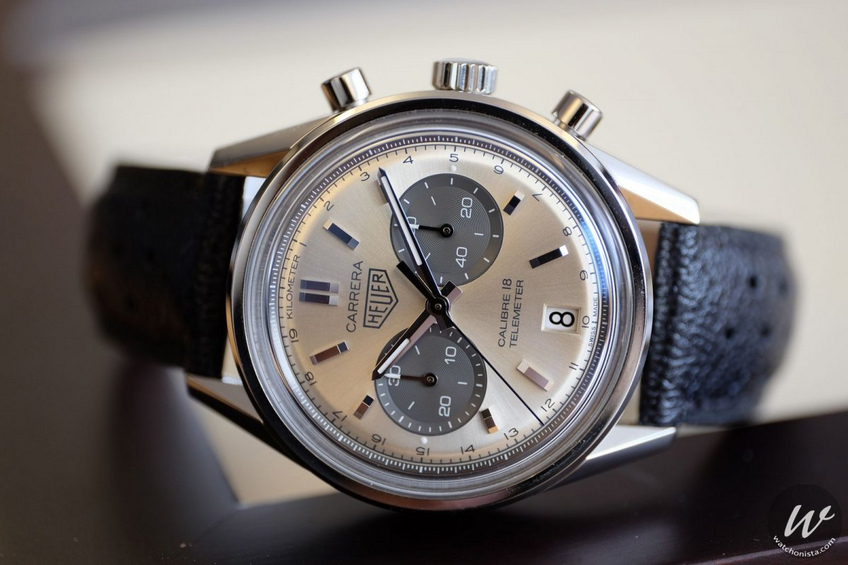
We won’t expect many of the folks who wear this Carrera to use the watch to time incoming artillery or thunderstorms, but the scale on the dial reminds us that chronographs had their origins as “tool watches”. We rarely use the tachymeter scale to compute speed over the course of a measured mile and dive watches rarely go 1,000 meters below the surface, but these capabilities give the watch its special character. So too, the Calibre 18 Telemeter chronograph reminds us that Carreras were purpose-built watches.
Based on the Selita SW300 movement, the nicely decorated Calibre 18 movement is visible through the display back. The newest Carrera chronograph will retail for approximately $6,000 in the U. S. market.
Carrera Calibre 6 Chronometer
If the Carrera Caliber 18 Telemeter chronograph pays homage to the Carreras that Heuer produced in the 1960s, the Calibre 6 Chronometer is a more imaginative interpretation of previous generations of Heuer watches.
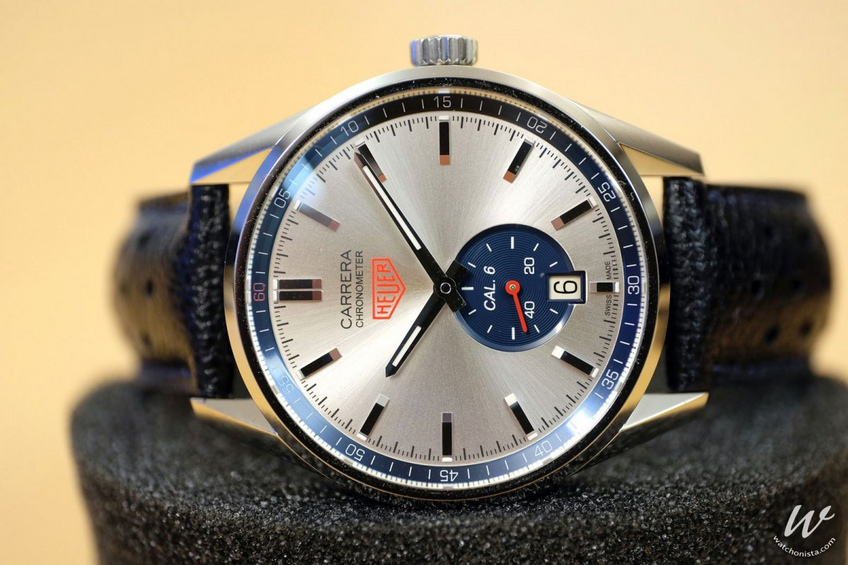
We’ll start in 1963, as we always do with the vintage Carreras. The texture of the dial, and thin hands and markers evoke the earliest Carreras.
Now imagine that, rather than being a chronograph, Heuer wants to go back to basics, back to a simple three-hand watch to tell the time of day. But rather than simply deleting the chronograph registers, TAG Heuer repurposes the register at six o’clock to display running seconds and the date. The subregister evokes the Heuers of the 1940s and 50s, simple three-hand watches, before chronographs came to dominate the Heuer catalog.
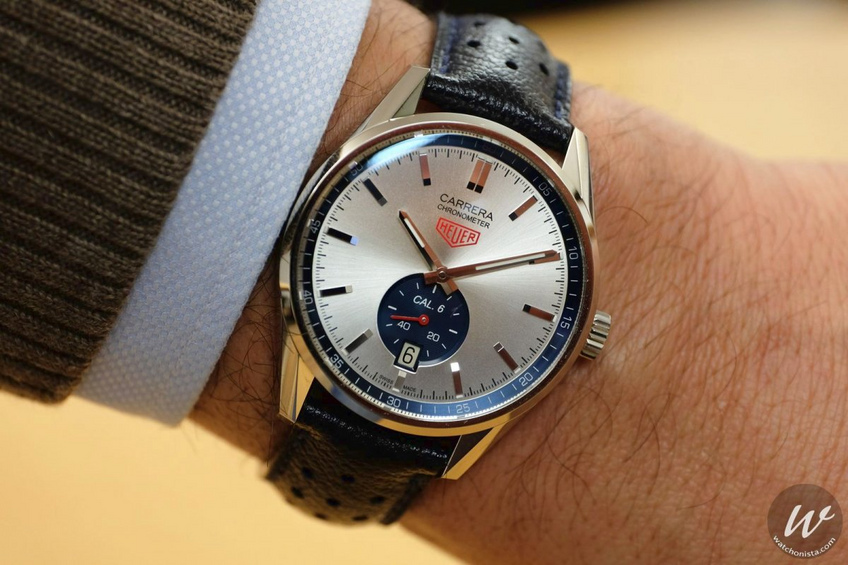
Now, we jump ahead to the 1970s, when most of the Carrera chronographs had contrasting registers, with the dial framed by a tension ring that matched the registers. The Calibre 6 Carrera uses this same approach, with the inner ring marked to show the minutes.
Over the last few years, as Jack Heuer closed out his decades with the Carreras, he showed us a favourite element – red accents. Red accents came to be seen as a personal hallmark of Jack Heuer, telling us that he had his hand in the design. For example, on the Carrera that celebrated his 80th birthday, the “80” on the tachymeter scale is done in bright red.
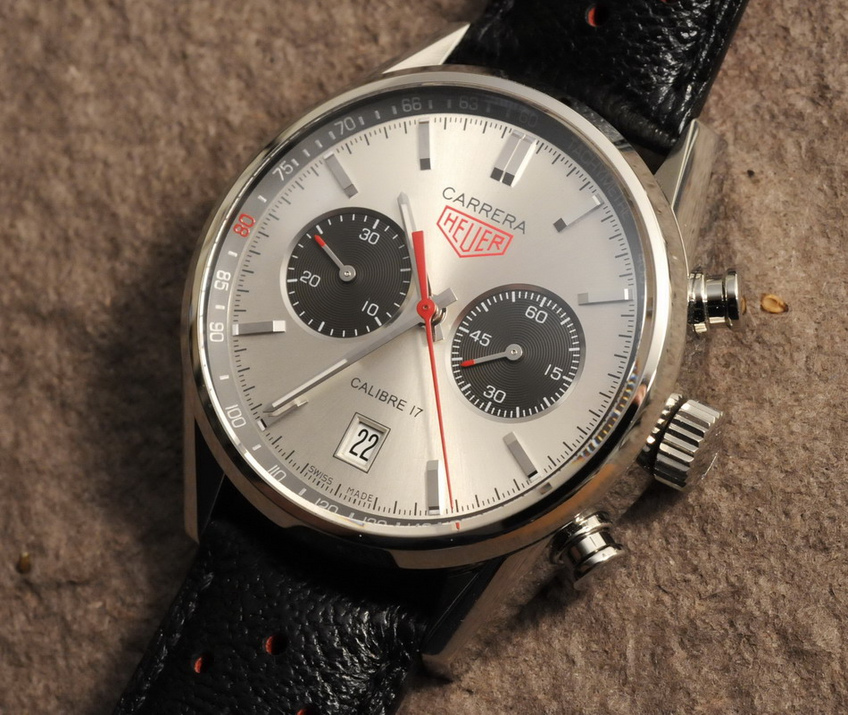
So too, when we study the Calibre 6 Carrera from top to bottom, we see three red accents – the “60” on the inner flange, the Heuer shield, and the running seconds hand. These elements tell us that even though Jack Heuer has finally left the company – after coming out of retirement a couple of times – he is still making his mark on the Carreras, just as he did in 1963.
The Carrera Calibre 6 Chronometer is one of the few Carreras that TAG Heuer has produced that carries a certified chronometer rating. The Carrera Calibre 6 will retail for approximately $3,500 in the U. S. market.
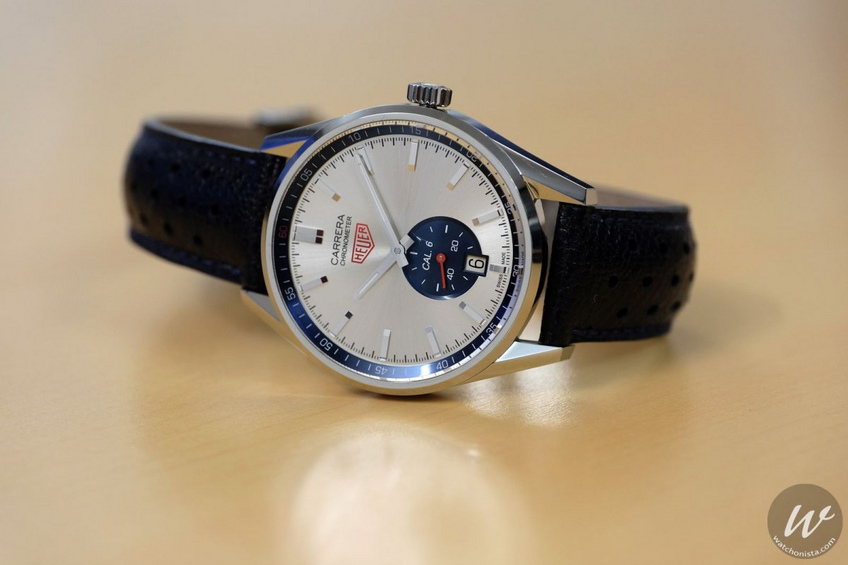
Back to the Past
The past year has seen significant changes at TAG Heuer. Jean-Claude Biver is the company’s new CEO; Chevenez is the brand’s new manufacturing facility; and last month at Basel, we saw the entirely new Carrera and heard plans for the TAG Heuer connected watch. We have met new ambassadors, seen new colors, and even puzzled over a new logo. Mr. Biver has announced plans to reposition the brand in the market, focusing on the $1,500 to $5,000 watches, leaving “haute horology” and its $50,000 to $100,000 price tags to other LVMH brands. For today’s TAG Heuer, the watches of the future are inspired by the aesthetics of the past, and we can all take comfort that the brand will rely on its glorious heritage, as it moves ahead. This heritage is captured well by the two newest Carreras to go onto the market, the Calibre 18 Telemeter chronograph and the Calibre 6 Chronometer.
For more information on the extensive world of the Heuer Carreras :



